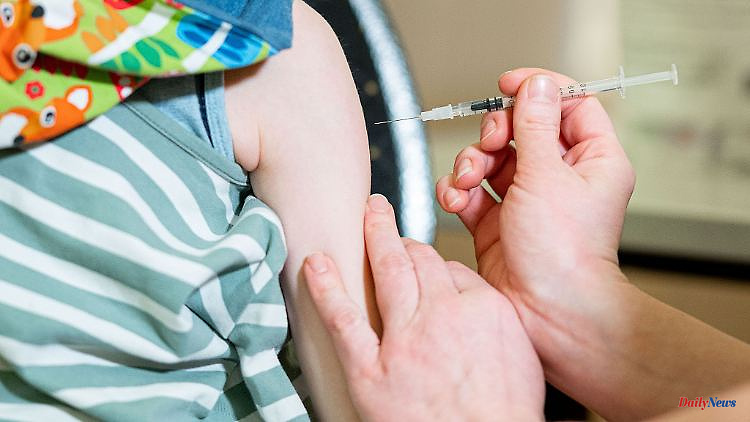The willingness of children and young people in Thuringia to be vaccinated is quite good in a nationwide comparison. In the corona pandemic, however, there were significantly fewer pricks, as an evaluation shows. Vaccination, in particular, was administered much less frequently.
Erfurt (dpa/th) - In the corona pandemic, fewer children and adolescents in Thuringia were vaccinated against diseases other than Covid than before. Compared to 2019, around six percent fewer boys and girls are currently vaccinated in Bavaria. This emerges from the child and youth report of the health insurance company DAK, which was available to the German Press Agency. The analysis included around 17,000 children and young people aged 0 to 17 who were insured with DAK-Gesundheit in Thuringia in the years 2019 to 2021. According to projections by the insurer, which has around 130,000 members in Thuringia, around 24,000 fewer children and young people were vaccinated than in the comparison year 2019. Compared to the federal government, where there was a decrease of eleven percent, the decrease in Thuringia was significantly lower .
The AOK PLUS has the most of all statutory health insurance in Thuringia with around one million insured (51.8 percent). Here, too, an evaluation of the data from children and adolescents aged 0 to 17 years showed a decrease in vaccinations of around nine percent.
The decline in the evaluations of both health insurance companies for vaccinations against the papilloma virus (HPV) is particularly pronounced. The virus can cause cervical cancer, among other things. "In particular, the decrease in HPV vaccinations gives us cause for concern," said Marcus Kaiser, head of the state of DAK-Gesundheit in Thuringia. Compared to the overall vaccination data, which takes into account both the first and last vaccinations of a vaccination cycle, significant declines can be observed, especially for the HPV first vaccination in boys and girls during the pandemic.
In 2021, the total number of HPV vaccinations here fell by 33 percent compared to 2019. In the case of the first vaccinations, the decline in boys was around 44 percent, and in girls around 18 percent did not receive the first vaccination. Kaiser recommended that initial vaccinations that were canceled or postponed during the pandemic should be made up for as soon as possible.
The DAK data are almost congruent with those of the AOK. Here, too, an evaluation of the HPV vaccination documented a decrease of around 34 percent overall; Here, too, the decline among boys (minus 43 percent) was almost twice as high as among girls (minus 23 percent). Insured children and young people between the ages of 9 and 17 were included in the analyses.
The analysis by the DAK also showed that the number of vaccinations against diphtheria, whooping cough, tetanus and polio fell significantly during the pandemic among DAK-insured persons, at minus 23 percent. Both the four-dose vaccination and the HPV vaccination can be given flexibly in terms of time. "When interpreting the results, it must be remembered that, in addition to the vaccinations recommended by the Stiko against measles, rubella and diphtheria, travel vaccinations such as cholera and rabies are also included," said the AOK, looking at the figures from the DAK. The statement that fewer children and adolescents were vaccinated as a result of the pandemic is “only partially correct”. It should also be taken into account that travel was only possible to a limited extent and travel vaccinations were therefore not absolutely necessary.












